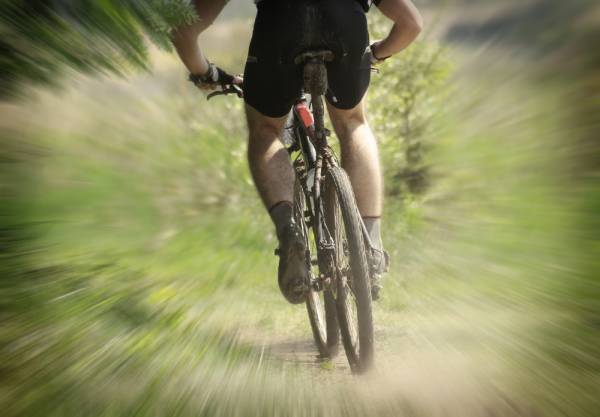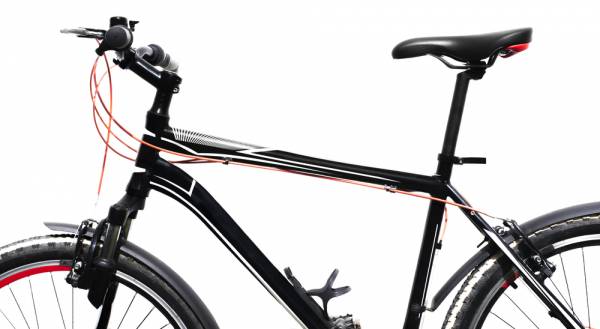There are many men involved in the sports of cycling and triathlon, but many do not realize that improper bike fits can cause a serious condition known as cyclist’s syndrome. Women can also get this condition, but for men the syndrome can be more painful and cause many unpleasant side effects that no man wants (including erectile dysfunction).
What is the Pudendal Nerve?
Cyclist syndrome involves the pudendal nerve (PN). The PN arises from the roots of the sacral plexus (S2-S4). 20% of the PN is motor fibers, 50% are sensory, and 30% are autonomic.
From the sacral plexus, the PN descends medially in relation to the trunk of the sciatic nerve, and from this area it enters the gluteal region and then traverses the greater sciatic foramen. Eventually, it turns into the nerve that innervates the perinea, skin, and superficial muscles. This nerve is accompanied by the pudendal artery and venous complex during its course.
The exact pathophysiology of PN entrapment is not completely understood, but there are a few theories. Many believe that neuronal insult can be caused by severe stretching or compression of the nerve, which can lead to ischemic neuropathy (a stroke of the PN) due to hypoxia (lack of oxygen).
Symptoms of Cyclist’s Syndrome
The symptoms of cyclist’s syndrome are very unpleasant for males. In a case study on a 41-year-old male who competed in an Ironman, researchers stated a major symptom to be penis pain with a dull ache to the perineum twelve to 24 hours after long-distance cycling.
This particular athlete’s cycling training was six to eleven hours, three days per week. The pain began in September and by mid-September he experienced pain to the perineum after sexual intercourse and pain with urination. He then competed in an Ironman and stopped training for several months. At this point, the pain subsided.
When the subject resumed his training, he began to feel pain to his penis again, which prompted him to see his doctor. You may be wondering if he had STDs, but he was tested for all STDs and came up clean. He then saw a neurologist who diagnosed him with cyclist’s syndrome.
Possible symptoms you may feel if you have cyclist’s syndrome are:
- Penis pain
- Erectile dysfunction
- Pain to the perineum
- Pain with urination
- Trouble sitting on the bike saddle without pain
- Pain after intercourse
These are just a few things to look for if you feel pain during your bike training. Remember, you may not feel all of these symptoms, but even if you have a few it may merit a visit to your healthcare practitioner.

Treatment Options
Physical therapy, chiropractic care, and even massage therapy can help release the uncomfortable symptoms of cyclist’s syndrome. In the same case study as above, a chiropractor found that through palpation of the lesser sciatic notch and the obturator internus caused pain to the penis at a score of nine out of ten. The chiropractor diagnosed the man with pudendal nerve entrapment. He began to use a technique called active release therapy (ART) on the area.
Chiropractors are not the only therapists that can train and certify in this type of treatment. Physical therapists and massage therapists can also train and certify in ART. After two weeks of ART, the study subject’s pain went from a 9/10 to a 5/10 and he began to train again. After four weeks of ART, his pain was down to 1/10 and he continued to cycle. After eight weeks of ART, his pain after sexual intercourse was gone and pain to his penis and perineum had subsided. At this point, he began to train for another Ironman.
Prevention
As they say, the best treatment is prevention. Male athletes need to make sure they have a proper fit for their bike and bike saddle. There are people who dedicate their lives to biking, bike fits, and saddle fits. Go to one of them and have them work some magic on your bike. There are a few things that an expert will look into in the saddle such as shape (different shapes suit different body types), shell and cutout design, padding, rails (the connection point to the rest of the bike), and covering.

Another aspect many do not consider is bike geometry. Your bike can be altered to help prevent injuries associated with cycling. In many areas, you can find someone who does this sort of work along with bike fittings and can make your bike truly customized for you. Specialists will look into where the saddle, bars, and front wheel sit in relation to one another so the rider sits comfortably, especially for long distances. If you are looking for a bike, it’s best to see someone who will make sure the bike fits you in all directions to prevent all injuries associated with biking before making the actual purchase.
No one wants a bike that causes penis pain. If you are looking to start cycling, make sure you use preventative care to keep yourself from running into this condition. Don’t skimp on yourself. Make sure that your bike is customized for you.
If you run into problems in the future, always talk to your primary care physician before starting any treatment program. Many physical therapists, chiropractors, and massage therapists can help with this condition, but make sure they know what they are looking for and what to do. Take care of your body – and that includes the parts that are covered up by underwear.
References:
1. Durante, Jaclyn and MacIntyre, Ian. “Pudendal Nerve Entrapment in an Ironman Athlete: A Case Report.” The Journal of the Canadian Chiropractic Association (2010): 276-281, accessed May 27, 2014, PMCID 2989401
2. Deakin, Robert T MD. “Chronic Musculoskeletal Conditions Associated with the Cycling Segment of the Triathlon; Prevention and Treatment with an Emphasis on Proper Bicycle Fitting.” Sports Medicine and Arthroscopy Review (2012): 200-205, accessed May 27, 2014, DOI: 10.1097/JSA.0b013e3182688fa0
3. Tate, Philip. Seely’s Principles of Anatomy and Physiology. (New York: McGraw Hill Companies, 2012), 791
4. Baechle, Thomas R and Earle, Roger W. Essentials of Strength and Conditioning Training and Conditioning, Third Edition. (Illinois: Human Kinetics, 2008), 291, 491-502
Photo 1 by Mikael Häggström (User:Mikael Häggström) [Public domain], via Wikimedia Commons.
Photos 2&3 courtesy of Shutterstock.






